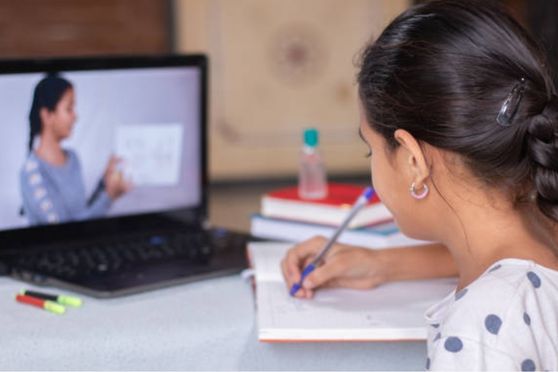Education 4.0 Report: Digitally Bridging the Learning Gap


Technology has profoundly changed education. It has not only expanded access to education but also made information available at one’s fingertips. It has grown into a powerful tool that has transformed education in several ways, from increasing student engagement, collaboration and interactivity to improving overall comprehension, time management and student-centred teaching. With the worldwide reach of the Internet, it has created a new environment of ‘anytime anywhere education’.
Digital teaching and learning – a concept that was still considered ‘futuristic’ a little while ago have also become customary in the fast-evolving post-pandemic world. During the pandemic, it proved to be the only feasible way to keep the education system going but at the same time, it also highlighted some issues, including digital inequality and learning gaps.
With the aim of addressing these issues through digital learning, the World Economic Forum collaborated with the United Nations Children’s Fund (UNICEF) and YuWaah (Generation Unlimited India) to launch the Education 4.0 India initiative. Under four themes – foundational literacy and numeracy, teacher professional development, school-to-work transition and connecting the unconnected –, the report aims to address the disparities in the country’s education system by exploring its challenges and identifying solutions that can be realised as scalable interventions. It complements India's National Education Policy 2020 (NEP 2020) by providing a framework for the development of scalable pilots that can be implemented by state governments and other stakeholders.
It proposes a roadmap to improve the country’s education system and urges all stakeholders in the EdTech space to work together and help this overarching transformation along. It encourages interactive teaching and learning and the integration of collaborative and skill-based education. It advocates the increased use of storytelling, interactive content, read-aloud games, quizzes and flip books (to name only a few) to make the learning process more interesting, individualised and engaging for students. It also highlights the importance of digitalising the country’s education system to become future-ready.
Digital Tools Can Reduce Learning Gaps
While the digital learning gap has been widening over the last few decades and spreading throughout the schools of India, it took COVID-19 to truly understand the magnitude of these inequalities. Closing this divide in education will take time, effort and commitment not only from the part of government but also from the part of schools, parents and students.
According to the Education 4.0 Report, one way of achieving equity could be through the digital transformation of the Indian schooling system. Fortunately, the pandemic didn’t only reveal the digital divide but also the benefits of distance teaching and learning.
Many believe that digitalising the country’s education system would help reduce the country’s learning inequalities by making education accessible to a large number of students. In addition to making it possible for students to access learning anytime and from anywhere, digital education would also enable them to learn at their own pace.
Digital Education: Reaching the Unreachable
One of the significant advantages of digital learning is that it is accessible at all times, anywhere and everywhere. It can be conducted online and offline and can be successfully used to deliver synchronous and asynchronous education.
Due to its very nature – provided via digital technology – this type of education can accommodate larger class sizes and bridge geographical gaps between teachers and students. As a result, it can provide everyone, including students attending schools in remote areas, with access to education.